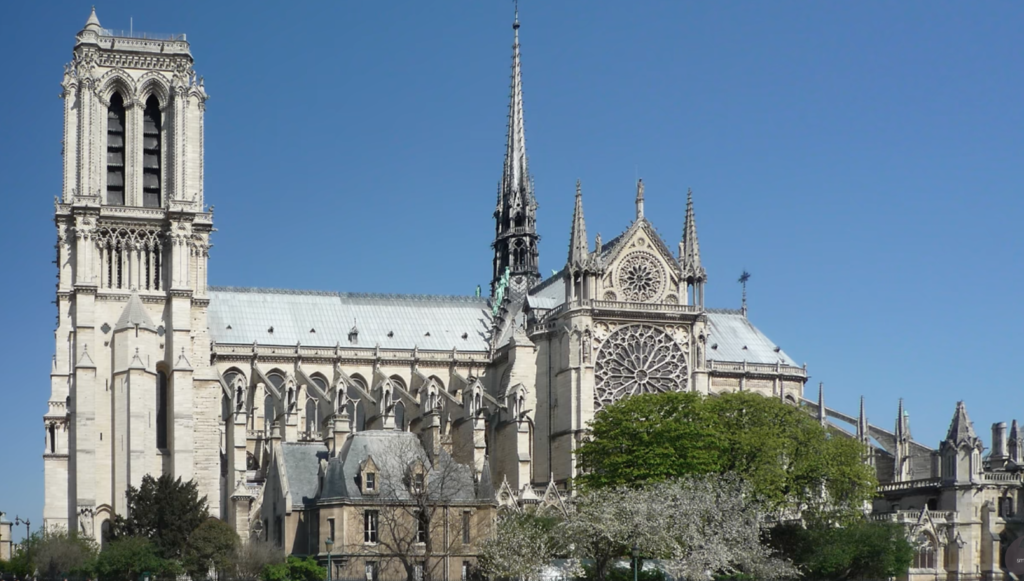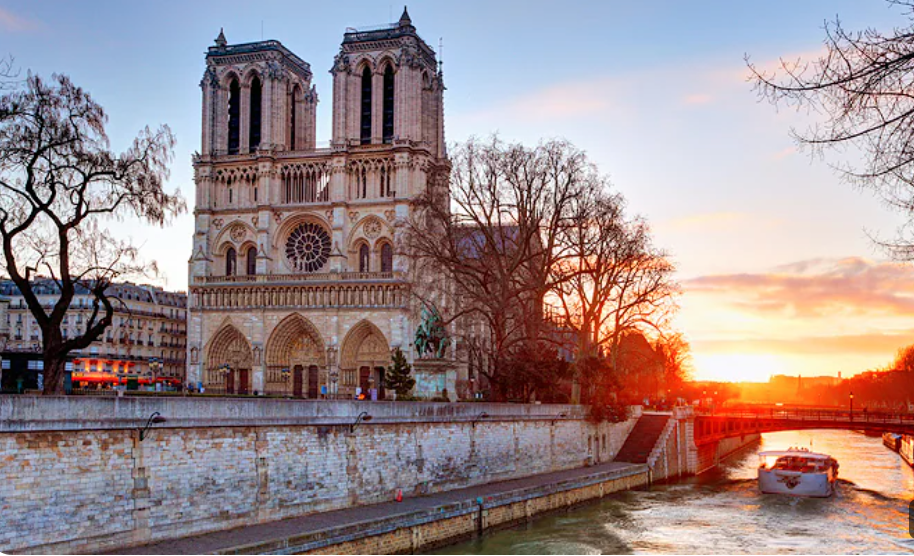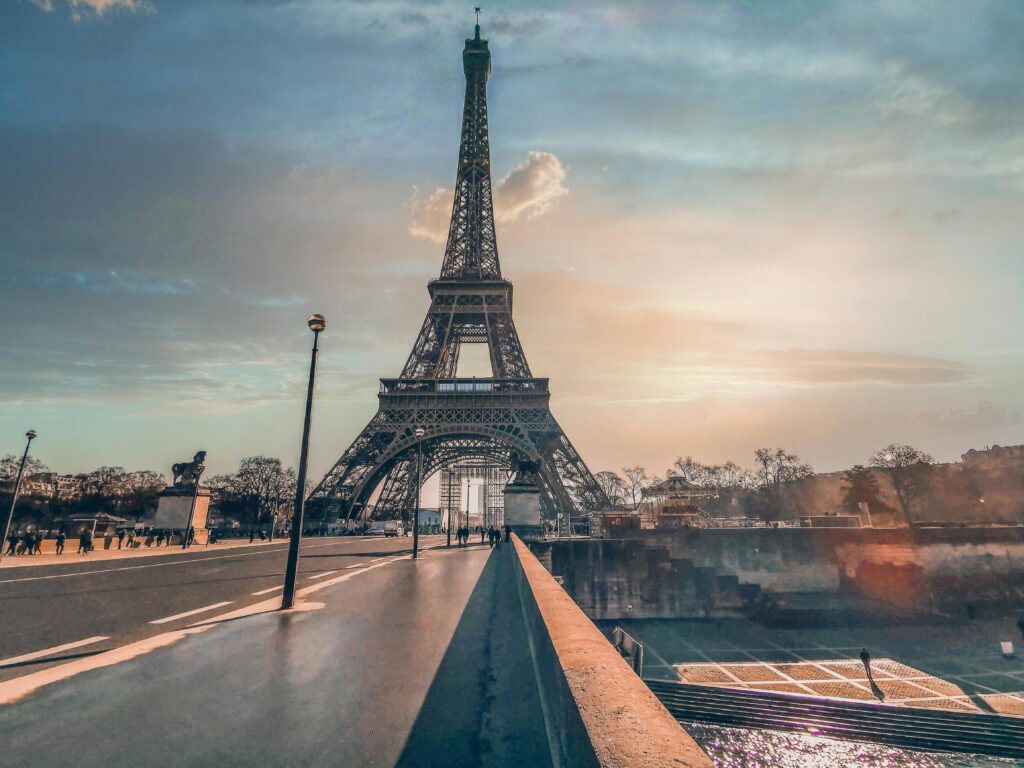Paris’ famous Notre-Dame de Paris, popularly known simply as Notre-Dame, is one of the greatest attractions for visitors in France, a shrine that combines the architectural and spiritual heritage of the city. This comprehensive guide to the largest and most spectacular cathedral in the world includes all the information about it, starting from its location and history, to its intriguing and breathtaking details, as well as an FAQ section with the most popular search queries ever entered on the Internet.
Location of Notre-Dame
Notre-Dame is sited on the Île de la Cité, an island in the River Seine, right at the center of Paris. Many other famous landmarks are very close, and what you would need is just a few minutes’ walk, for instance, to the Louvre Museum or the Latin Quarter.
- Address: 6 Parvis Notre-Dame – Place Jean-Paul II, 75004 Paris, France.
Getting to Notre-Dame is easy, whether you are coming from within Paris or from the outskirts of the city.

How to Get to Notre-Dame: Communication System
- By Metro: The nearest metro station is Cité (Line 4), a 5-minute walk away. Another nearby station is Saint-Michel Notre-Dame (RER B and C), which is slightly farther from the central station.
- By Bus: Several buses are available that have stops near Notre-Dame, and some of the most commonly used routes are 21, 38, 47, 85, and 96.
- By Bike or Foot: Paris is very easy to explore on foot, and Notre-Dame is easily accessible by walking from many of the city’s favorite spots or by bike using Velib.
- By Boat: If you prefer a more scenic route, you could always take a Seine riverboat ride, which offers particularly good views of the cathedral and stops nearby at Pont St. Michel.

Structure and Architecture of Notre-Dame
I especially really liked the Gothic architecture of Notre-Dame Cathedral. Built in the French Gothic style, its structure includes stunning features like:
- Flying buttresses: These external supports help the cathedral rise higher and give it its remarkable appearance.
- Twin towers: Notre-Dame consists of two imposing towers, each approximately 69 meters in height. Both are open to the public, providing an opportunity to take a bird’s-eye view of Paris.
- Rose windows: Equally important is the cathedral’s facade, which includes three beautiful rose windows—North, South, and West—as well as colorful stained glass, which brings streams of light into the interior of the cathedral.
- Sculptures and gargoyles: The cathedral’s walls are covered with intricate stone carvings and mythical gargoyle figures, giving the cathedral a mystifying and enchanting quality.

A Brief History of Notre-Dame
Notre-Dame’s construction began in 1163 under Bishop Maurice de Sully, but it took nearly two hundred years to complete, with the final touches added in 1345. For centuries, it has been the setting for many of France’s most momentous events, including royal anointings and the crowning of Napoleon Bonaparte as Emperor.
Unfortunately, in April 2019, one of the biggest catastrophes struck, when a fire destroyed the roof and spire of the cathedral. It was a touching experience for people across the world. However, with financial assistance from the French government and contributions from across the globe, restoration has begun, and it is hoped to be ready by the time of the Paris Olympics 2024.
The Beauty of Notre-Dame
Notre-Dame strikes you with its majestic steeples and gorgeous stained glass windows. The frontal view of the cathedral is a masterpiece, with carvings that depict stories from the Bible. Once inside, you immediately become aware of the high, steeply pitched roofs and the arches that lift you upwards, all the while making you feel humble yet part of something grand.
Due to the multiple reflections of light from the rose windows, a colorful spectacle forms on the floor, especially at sunrise or sunset. Outside, the gargoyles not only add a creepy charm but also function as rainwater drain pipes, guarding the cathedral.

Main Attractions Inside Notre-Dame
- The Towers: Climb the 387 steps to the top of the cathedral for a close-up look at the gargoyles and bell towers, as well as breathtaking views of Paris.
- The Treasury: Notre-Dame houses a treasury full of priceless artifacts, including the Crown of Thorns, reputed to have been worn by Jesus Christ.
- The Crypt: Beneath the cathedral lies the Architectural Crypt, which exhibits the underground history of Paris through medieval remains and other artifacts.
- The Great Organ: This is one of the largest organs in Europe, and the instrument features over 8,000 pipes.
What Makes Notre-Dame Unique?
Notre-Dame is not just another cathedral—it is a living monument serving as a religious, cultural, and architectural icon today. It has even inspired literary giants like Victor Hugo, whose novel “The Hunchback of Notre-Dame” placed the cathedral on the world map.
The cathedral has survived revolutions, world wars, and even a fire that greatly damaged it. However, thanks to continuous restoration efforts, it remains a symbol of resilience and a UNESCO World Heritage site that will stand for generations to come.
Frequently Asked Questions about Notre-Dame
1. Is Notre-Dame accessible to the public after the fire?
Currently, the nave of Notre-Dame is closed to visitors due to ongoing renovations. However, you can still visit the surrounding areas and admire the cathedral from the outside. It is expected to reopen to the public by 2024.
2. Are the towers of Notre-Dame open to climb?
The towers are currently closed for restoration, but once the renovation is complete, visitors will once again be able to climb the towers for spectacular views of Paris.
3. What are the opening hours of Notre-Dame?
Notre-Dame typically opens at 8 AM and closes at 6:45 PM on weekdays and 7:15 PM on weekends. However, due to ongoing restoration, these hours may change, so it is best to check before visiting.
4. How much does it cost to visit Notre-Dame?
Visiting the cathedral itself is free, but there is a small fee to climb the towers and enter the treasury. Prices vary, so it’s advisable to check online before planning your visit.
5. Can I attend a service at Notre-Dame?
Yes, once the cathedral reopens, you can participate in its regular services, including masses. Services are conducted in French, but the church is open to anyone from around the world.
Why Notre-Dame Should Be on Your Must-Visit List
Notre-Dame is more than just an iconic tourist destination—it is a historical, cultural, and religious monument that embodies the rich history of France. Whether you come to admire its Gothic architecture, learn about centuries of French history, or simply walk around and pray, a visit to Notre-Dame will leave a lasting impression.
When the cathedral reopens, it will continue the traditions it has upheld for centuries. Make sure to add Notre-Dame to your list of must-visit places in Paris—you won’t be disappointed!
Plan Your Visit
- Nearest Metro Station: Cité (Line 4).
- Best Time to Visit: Early morning or late afternoon, when there are fewer people, and the lighting is perfect for photos.
- Estimated Reopening: Expected by 2024 after ongoing renovations.




